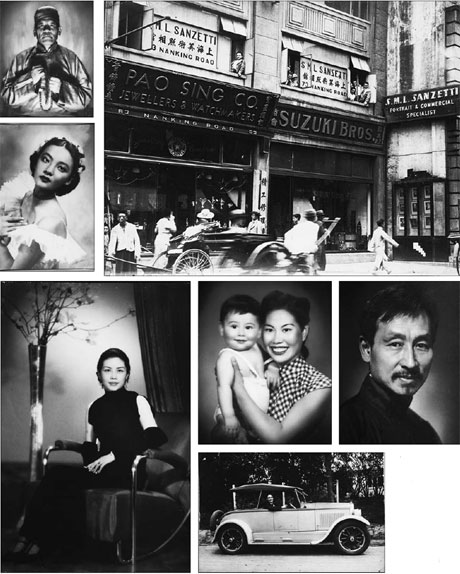Sam's sepia memories
Updated: 2011-11-06 07:44
By Zhang Kun(China Daily)
|
|||||||
|
Sioma Lifshitz came to Shanghai in 1922, a 20-year-old Russian Jew arriving in China empty-handed. Thirty years later when he left, he had a collection of more than 20,000 photographs in his luggage, all mementoes of his years on the Bund. Provided to China Daily |
He could have taken a photograph of your grandparents, or great-grandparents. Now there is a massive online search to connect photographs and subjects. Zhang Kun reports from Shanghai.
Sioma Lifshitz boarded a ship to Shanghai in 1922, a 20-year-old Russian Jew coming to China empty-handed. Thirty years later when he left for Israel, he carried in his luggage more than 20,000 photographs that he took in Shanghai.
Lifshitz called himself "Sam Sanzetti", and after working for a short period as an apprentice for an American photographer, he opened his own studio in 1927 on the bustling Nanjing Road, just off the Bund, behind the Peace Hotel.
It was the best photo studio in Shanghai. Sanzetti took photographs of people from all walks of life celebrities, film stars, young couples, families and children. Twenty-five years after his death in Israel in 1986, these pictures have been brought back to Shanghai and published by the Israeli consulate on its micro-blog website.
They were an instant hit online. People marveled at the beauty, history and quality of the images, forwarding them to friends thousands of times within hours. The consulate's microblog account chalked up 10,000 more followers within days, thanks to these old photographs.
Oren Rozenblat, deputy consul general of Israel in Shanghai, says: "We want to put on an exhibition of Sanzetti's pictures, but we know little about them, so we decided to publish them on public media, and ask people to contribute information about them."
"We've received many phone calls. People say 'this looks like my grandma' or 'this could be my father', but nothing solid has come up," says Rosita Chen, news officer with the Israeli consulate.
"It would be beautiful if we could find the people in the pictures," Rozenblat says, "and learn about their stories. It will be beautiful to see at the exhibition a very old lady standing in front of her picture as a young bride."
Sanzetti's Shanghai Art Photo Studio was the most luxurious at the time, and he didn't leave Shanghai until 1957. He enjoyed life in Shanghai, and spoke fondly of his experience in a later interview in Israel.
When he boarded the ship from Vladivostok, he was a young man disillusioned with the Russian revolution, with no idea of what he would become.
"You could have found me in Honolulu, if that happened to be the destiny of the ship," the Israeli newspaper had quoted him as saying. Sanzetti married a Chinese woman and acquired a stepdaughter; they did not follow him to Israel. He married again in Israel, and his stepson there inherited his pictures and his passion for photography.
Last year Pan Guang, a professor and researcher with the Shanghai Academy of Social Sciences, found Sanzetti's son and asked him to show these pictures in Shanghai. Pan has been studying Jewish legacy in Shanghai for decades.
"From the mid 1800s, many Jews came to Shanghai and opened restaurants, fashion shops and other businesses. Sanzetti's photos are highly artistic, providing a valuable record of the city's history," Pan says.
Pan has found more than 10,000 pictures by Sanzetti, and brought about 200 of them to Shanghai, among which are portraits of Chinese, as well as expatriates.
Little is known about the images, except for a few words Sanzetti jotted down in Hebrew. For example, behind the picture of a young Caucasian, Sanzetti had noted that he was a pilot whose plane was downed by the Japanese and he was killed.
"His pictures brought out the most beautiful aspect of his subject," says Ma Liang, a Shanghai-based conceptual photographer and dedicated collector of antique photographs.
"He designed elaborate lighting and pictured people like Hollywood stars.
"I've seen lots of antique photographs and no one else has such graceful poses and perfect craftsmanship. It must have cost a fortune to have pictures taken by Sanzetti," Ma says.
The building where Sanzetti's studio once was no longer stands. But Rozenblat wants to have the exhibition nearby.
"He was very attached to the city. That's why he carried all those pictures with him when he had to leave China."
You can contact the writer at zhangkun@chinadaily.com.cn.
(China Daily 11/06/2011 page15)
